We know that rabbits see extremely well, but does your bunny see in color like you or at all? Even though it’s quite tricky to decipher rabbit affection signs so as to bond with them, a lot of people still like to get themselves this pet because they’re furry little wonders. And if ever there was an animal who has a 360-degree view of the world, it’s the rabbit. These sweet, cuddly creatures have eyes strategically positioned high on the sides of their head so they can see what’s going on around them. Except for a small blind spot directly in front of its nose, rabbits have an enormous field of vision.
But is a rabbit’s vision similar to ours? When they look around, do they see images with clarity and color like we do? Not really. Although we’d like to think our furry friends relate to the world visually like we do, rabbits’ eyes function differently — and that includes how they see color.
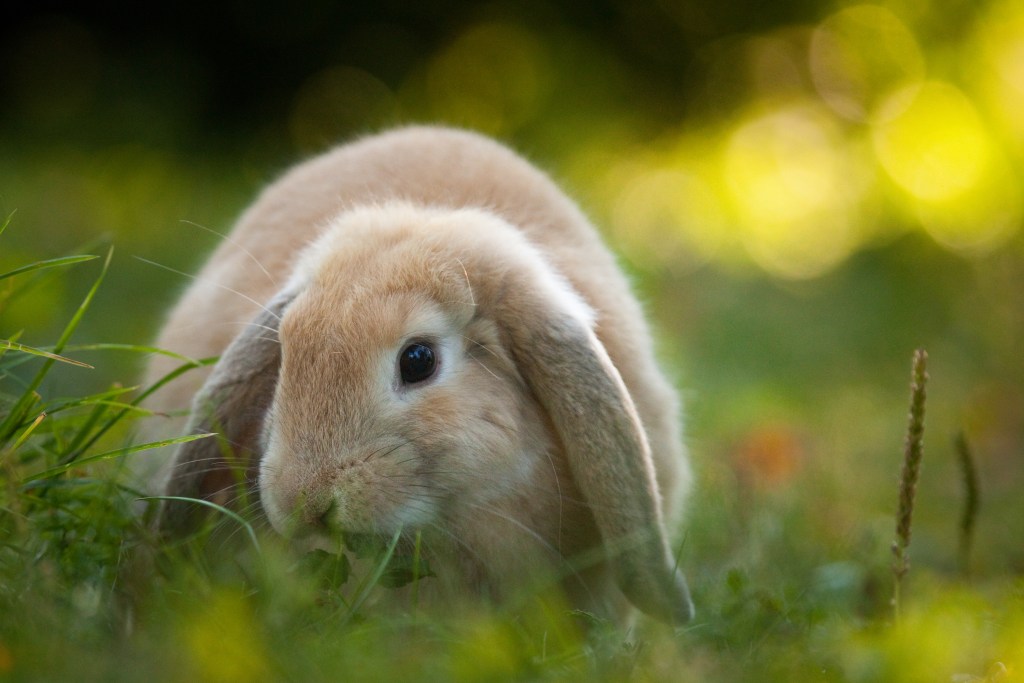
How do rabbits see color?
Due to the composition of their eyes, rabbits throughout their lifespan only have two-color vision. (Humans have three-color vision.) Scientists say that’s because the retinas of domestic rabbits have more rods than cones. Cones give us the ability to see color. Rods are activated in low-light situations and lack color-vision pigments.
If a rabbit’s eye were compared to a human eye, we would say that the rabbit had protanopia — also known as color blindness. Essentially, they are unable to perceive red and green colors. Humans who have protanopia perceive red as black. Also, some shades of orange, yellow, and green all look like yellow.
Rabbits don’t see most color but see extremely well in the dark
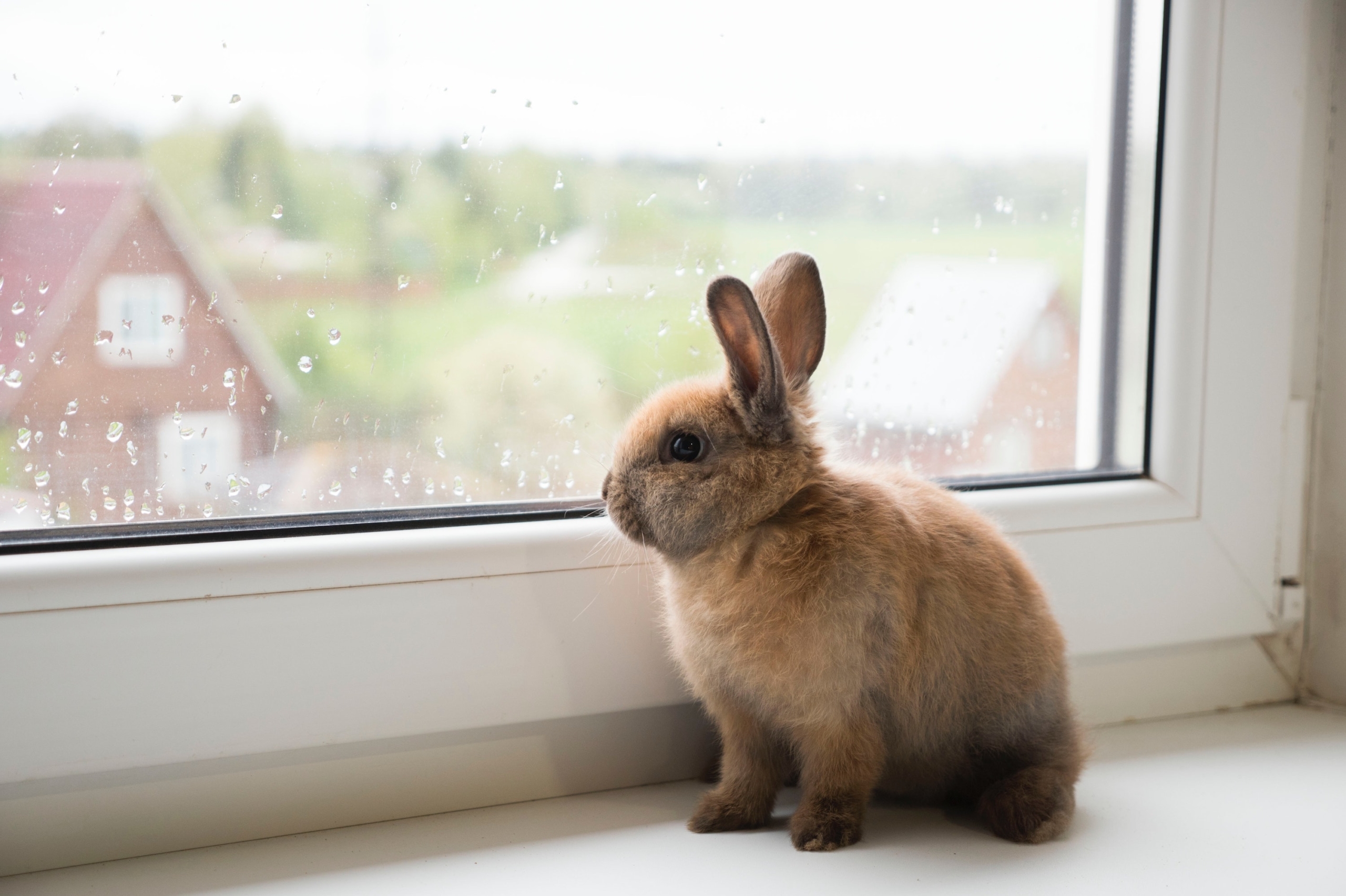
But don’t feel sorry for our sweet, furry friends. They aren’t concerned with color for a good reason — their eyes are designed to help keep them safe. Remember those extra rods that activate in low-light situations? Because rabbits are crepuscular animals, meaning those most active at dawn and dusk, it’s more important for rabbits to be able to see in low light than it is for them to see the bright green of a grassy slope.
Fortunately, a rabbit’s eyes have evolved to help them see their best in dimly lit situations instead of during daylight or nighttime hours. One of the consequences of this adaptation is that they likely don’t see your face in great detail, rather as a grainy figure. Your voice, scent, body shape, and mannerisms are what become familiar to your rabbit, which explains why they may appear frightened when you wear or carry something that significantly changes your appearance.
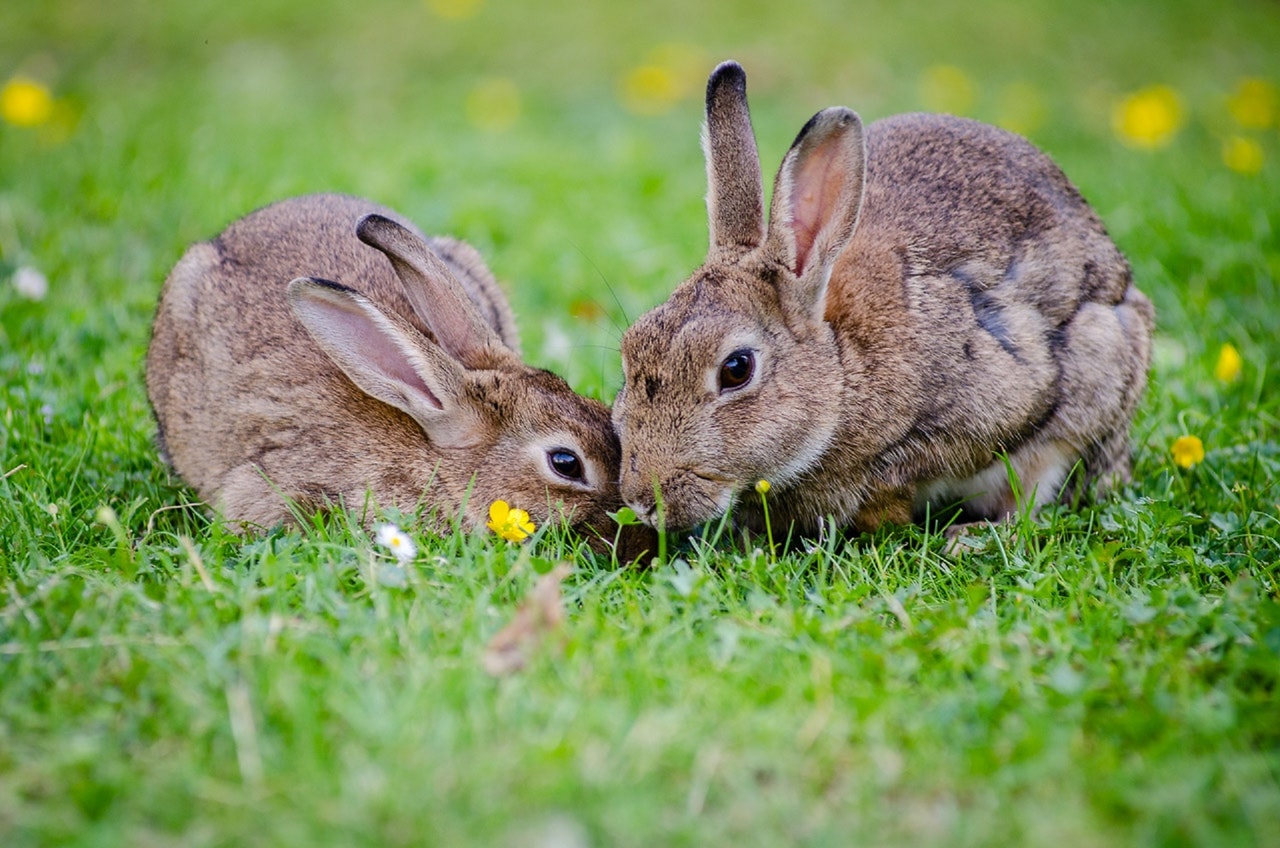
What your bunny lacks in seeing color he makes up for in wide-range vision
As prey animals, rabbits need to be able to leap to safety at a moment’s notice. That’s why their eyes are located on the sides of their head. They share this characteristic with other prey animals, such as deer and antelope. This extremely wide field of view, combined with the eyes’ ability to operate independently, allows the rabbit to see movement from almost every angle, including behind and above them.
With limited color can rabbits see better near or far? It’s complicated
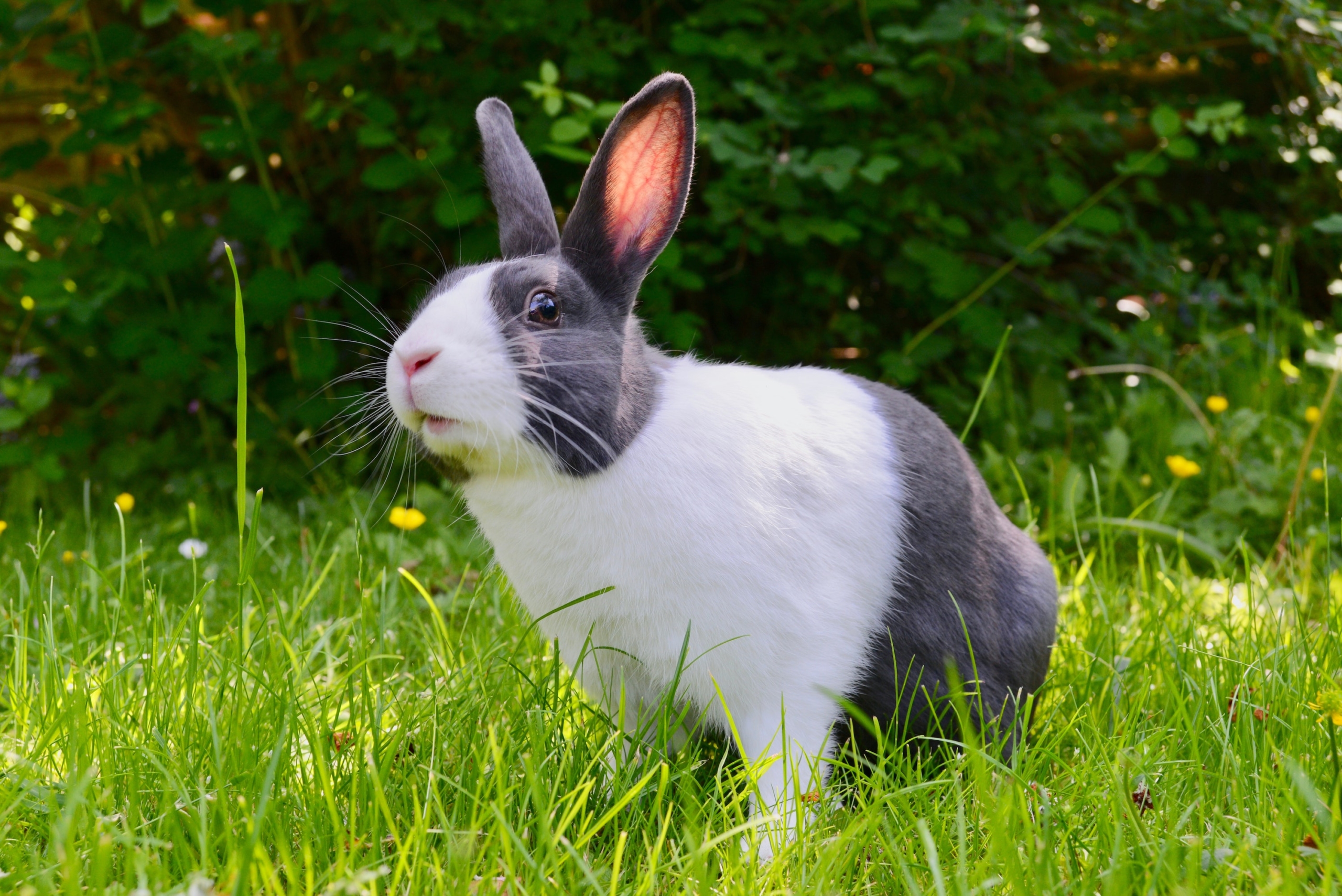
Amazingly, rabbits are near-sighted, far-sighted AND blind all at the same time. Why is this?
- Due to the placement of their eyes on their head, rabbits’ eyes are monocular, meaning they operate independently when they are looking to the side. This gives them far-sighted vision but doesn’t do much for their depth perception.
- A rabbit’s vision overlaps when it is looking at something directly in front of them. The field for this binocular vision is small, about 27 degrees. In this case, they are nearsighted and better able to gauge how close an object is to them.
Inside that nearsighted field of vision is a small area in which the rabbit can’t see anything at all. Have you ever heard the phrase “can’t see your nose in front of your face?” That’s literally true for rabbits. In effect, rabbits are unable to see an area of 10 degrees in front of their nose and beneath their chin.
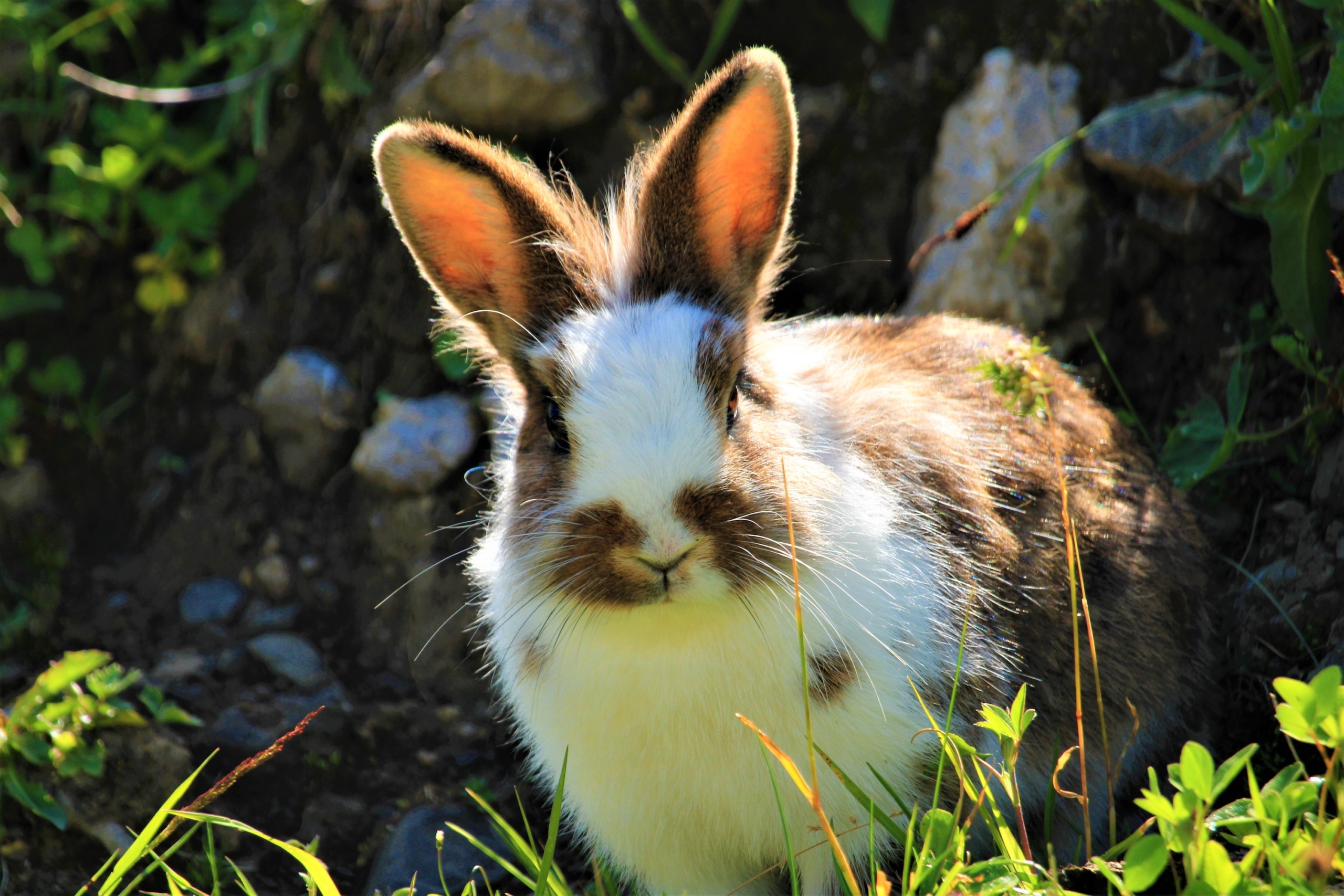
Rabbit vision helps your bunny thrive
So, although rabbits can’t appreciate the rainbow of colors like most humans can, the way they see is specifically designed to help them thrive in their own environment. Instead of color, they appreciate the love and care you provide. You witness their joy and happiness with every twitch of their sweet little nose.
Editors' Recommendations
- A simple guide to what to feed tadpoles in your aquarium
- Is my rabbit pregnant? 5 telltale signs you should know
- Are bubbles in a fish tank a problem? They just might be
- What you need to know about sugar gliders before you get an exotic pet
- Can you make a profit breeding your bearded dragon?



